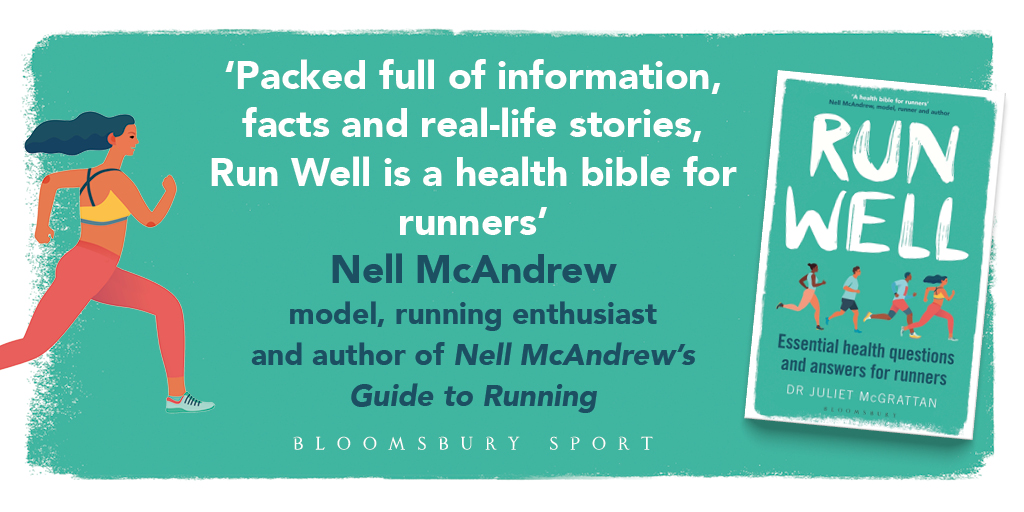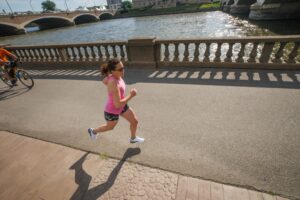The recent heatwave in the UK has certainly been challenging for runners. I don’t know about you but even when I’ve gone early in the day to avoid the worst of the heat, I seem to have sweated absolutely buckets. Hot weather, sweat and shorter shorts than usual is the perfect recipe for skin chafing on your thighs. Speaking from personal experience it’s a bit sore while you’re running but when it really gets you is in your post-run shower. Eye watering, shout-out loud stinging when the hot water hits raw skin. Ouch! You’re then walking like John Wayne and back to running capris until it’s healed up. And of course there’s sports bra chafing too. Sore red skin around your chest or on your shoulders which means you spend a couple of days trying to find a normal bra with straps in a slightly different place or work out if you can get away without wearing one at all! Chafed skin is no fun.
What happens when skin gets chafed?
Chafing can either be caused by skin rubbing against skin or fabric rubbing against skin. The friction wears away the top layer of skin exposing the more delicate skin cells underneath. These skin cells aren’t mature enough to be on the outside, they’re more fragile and surrounded by small nerve endings and blood vessels which become exposed too.
So, what can you do to prevent skin chafing and if it does happen, what’s the best way to treat it?
How to prevent skin chafing when running
Prevention is always better than cure so here are a few tips to keep your run comfortable and your skin intact, especially in hot weather:
- Wear snug fitting clothes. Baggier clothes will move around more. Look for a good fit in your problem area so, for example, slightly longer Lycra shorts will stop your thighs rubbing together.
- Get fitted for your sports bra. 70 per cent of women wear a bra that’s the wrong size. The main error is a chest band that’s too big and a cup that’s too small. Getting a perfect fit reduces breast movement and therefore reduces risk of rubbing from a moving chest band.
- Choose technical fabrics. Soft, seam free fabrics are best. Wet clothes will chafe much more quickly and technical fabrics wick sweat away from the skin but and dry quickly.
- Use a barrier cream. You can use a lubricant such as Vaseline, or Body Glide and apply it before you run. Alternatively, particularly if you’re going to get wet, use Sudocrem or Bepathen (a nappy cream for babies) to protect the skin.
- Use your antiperspirant. These won’t directly protect the skin but they can reduce sweating by blocking pores. Don’t use a perfumed one near your genitals.
How to treat chafed skin
Skin chafing happens to all of us from time to time despite our best intentions. Here are some tips for treating it:
- Clean the skin as soon as possible. Use warm water and a mild soap. Avoid strongly perfumed body washes. It will sting a bit at first but keep going.
- Dry the skin thoroughly with a soft, clean towel.
- Apply Sudocrem (this isn’t a sponsored post – I just love the stuff!), it contains zinc oxide which is a mild antiseptic and it creates a barrier to prevent further damage. Another good choice of antiseptic is Savlon.
- Leave the skin exposed to the air if you can.
- Cover with a sterile dressing if you need to, to protect the skin from further rubbing.
Skin usually heals in a few days. It might feel a bit itchy and be slightly red but it shouldn’t get sticky or smelly and the redness should gradually reduce rather than get bigger and spread. If any of these things happen, it indicates possible infection. Speak to your pharmacist about what you can buy over the counter and whether you need to see your doctor.
There’s more about skin conditions for runners, including signs of sun damage in my new book Run Well: Essential health questions and answers for runners, published by Bloomsbury and available from all good book sellers.









The key is to lube on then lube on some more. Thank you for sharing these practical guidelines
Have a great day
What would we do without lube?!